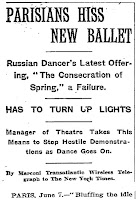Sansho-blogging,
essay 3 of 6 on the film
Sansho the Bailiff (1954)
 |
| Kannon Holding a Lotus Seat and Seishi in the Pose of Orant, wood and gilt lacquer, Probably 17th century, Edo Period, Japan. From the collection of the Yale University Art Gallery. |
A profound meditation on compassion and mercy, Sansho the Bailiff (1954) builds its
power through the ethical wisdom of its narrative and the beauty and
power of its visual expression. For each of these six entries, there will be a two-pronged focus, first on the
ethics of Sansho the Bailiff and
second on visual analysis of targeted scenes.
The Ethics of Sansho the Bailiff: Duty Toward
Family
The conclusion of Sansho
the Bailiff reminds me of the equally masterful (as well as equally
ambiguous) closing scene of Charlie Chaplin’s City Lights (1931). In his poignant comedy, Chaplin’s
focus is on the nature of romantic love—a fragile emotion in a world of
poverty. Similarly, in director Kenji Mizoguchi’s
Buddhist-inflected climax, Sansho the
Bailiff presents love (family love in this case) persevering in a world of poverty. In
each movie, the beauty of reunion is tempered by harsh reality.
 |
| Love in a world of poverty and blindness. Above: The climax of Sansho the Bailiff. Below: The climax of City Lights. |
The children, Zushiô and Anju, must find their individual
paths to express their commitment to the family and the shared ethical
precepts. Ultimately, their efforts lead neither to wealth nor happiness,
but significantly they do lead toward reunion. In the ethical perspective
of the film, wealth and happiness are worth nothing compared with the
completion of the circle—the reunion which confirms the family’s values.
 |
| Anju (Kyoko Kagawa) as she urges her brother to return to the family's values. |
In the end, when Zushiô apologizes to his mother for his
actions, she responds, “You do not need to apologize for anything. I can
tell by your presence that you have obeyed your father’s precepts.” In
the stark visual imagery of the climactic scene, as the two figures
cling together on a tsunami-ravaged beach, it’s impossible to hear her words
ironically. They are from the heart. Zushiô’s triumph is to end in
poverty. We are asked to accept and respect that.
And it’s a similar triumph to the one that Chaplin can claim
at the close of City Lights.
Both Zushiô and Chaplin end as tramps, forgotten by a world filled with
blindness and yet redeemed by their fidelity to their core values.
 |
| Left: Zushio reunited with Tamaki in Sansho the Bailiff. Right: The tramp and the blind girl reunited in City Lights. |
Familial
Responsibility in Action
In order to call her brother Zushiô back to the teachings of
the family, Anju asks him to assist her with an act of compassion. She
requests that Zushiô help her gather material to create a shelter for the
ailing slave Namiji.
 |
| Above: Zushio and Anju break a tree branch as children. Below: Zushio and Anju as adults. |
The overhead shot of Anju reaching for a tree branch is a close visual replay of a memorable shot from the earlier scene. In both cases, Anju solicits Zushiô’s help to break off a branch and they must work together to accomplish the task. They tug at a branch and fall to the ground when it breaks, the work dissolving into child’s play as they laugh at themselves. The brother and sister are united in their work ethic and in their deep love and respect for each other.
 |
| Left: Breaking a tree branch, Zushio and Anju fall to the ground as children. Right: In an echo of earlier times, Zushio and Anju fall to the ground as adults. |
The cinematography, the soundtrack, and the dialogue all
work together to call Zushiô back to his familial responsibilities. The
scene climaxes at the critical moment when Zushiô says, “Anju, let’s run
away.” With this statement, the narrative
of Zushiô’s life shifts. He has returned to the family and his story must
now play out according to the family’s values.
 |
| Brother and sister working together: Anju plans Zushio's escape from Sansho's slave compound. |
Reference Sources
Personal Views: Explorations in Film by Robin Wood
Kenji Mizoguchi and the Art of Japanese Cinema by Tadao Sato
“Sanshô dayû and the Overthrow of History” by Carole Cavanaugh, essay included with Criterion DVD
“Mizo Dayû” by Dudley Andrew, essay included with Criterion DVD
Criterion DVD commentary by Jeffrey Angles
Watch Sansho the Bailiff…
Rent Sansho the Bailiff at Netflix or other rental service
© 2013 Lee Price




















